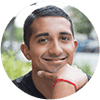Why Brew Coffee in Extreme Climates?
Brewing coffee in extreme climates presents a unique set of challenges and opportunities. The harsh conditions have a direct impact on the growth of coffee beans, resulting in distinct flavors and characteristics. For instance, coffee beans grown at high altitudes in extreme climates such as the Andes Mountains or the Himalayas develop complex flavors due to their slower maturation process. Additionally, these extreme climates can foster resilience in coffee plants, leading to a more robust crop.
Moreover, brewing coffee in these environments promotes economic growth and sustainability for local communities, providing a source of income in areas where traditional crops may struggle. The allure of exotic, rare, and high-quality coffee from extreme climates also attracts coffee enthusiasts worldwide, making it a lucrative market. Overall, the trend of brewing coffee in extreme climates aligns with the increasing demand for unique and high-quality coffee experiences.
What are the Benefits of Brewing in Extreme Climates?
Brewing in extreme climates offers unique benefits, such as slow cold brewing at high altitudes, resulting in smoother coffee with reduced bitterness and acidity.
Pressure brewing in Antarctica can create a distinct flavor profile due to the extreme conditions, offering a rare and sought-after taste. Additionally, extreme climates can lead to the cultivation of unique coffee varieties with exceptional flavors and aromas.
When brewing in extreme climates, the coffee's flavor and characteristics can be remarkably enhanced, providing a one-of-a-kind coffee experience for enthusiasts. This is due to the special conditions that allow for a slower, colder brewing process at high altitudes, resulting in a smoother and less bitter coffee. Furthermore, extreme climates can also lead to the growth of rare coffee varieties with exceptional flavors and aromas, making for a truly unique and sought-after brew. In short, brewing in extreme climates offers a multitude of benefits that cannot be replicated in more temperate regions.
What are the Challenges of Brewing in Extreme Climates?
Brewing coffee in extreme climates poses several challenges. Maintaining consistent brewing temperatures is difficult in extreme cold or hot conditions, which can greatly affect the extraction process. In extremely cold conditions, brewing equipment may freeze, while in extremely hot conditions, water evaporation rates increase, altering brew ratios. Additionally, sourcing quality water becomes a challenge, especially in deserts or remote areas. Extreme climates also have a significant impact on bean storage and freshness, leading to quicker deterioration. Altitude brewing presents the challenge of adjusting brewing parameters due to lower boiling points. To overcome these challenges and achieve a successful brew, it is recommended to preheat brewing equipment, use temperature-stable gear, and practice adaptive brewing techniques in extreme climates.
Extreme Brewing Techniques
When it comes to brewing coffee, most of us are familiar with the traditional hot brewing method. However, in some of the world's harshest climates, this won't cut it. That's where extreme brewing techniques come in. In this section, we will explore three methods of brewing coffee that have been adapted to withstand extreme temperatures and conditions: cold brewing, hot brewing, and pressure brewing. Each of these techniques offers a unique and adventurous way to enjoy your daily cup of coffee.1. Cold Brewing
- Select coarsely ground coffee beans.
- Combine the coffee and cold water in a jar or container for cold brewing.
- Stir gently to ensure all the coffee grounds are wet.
- Cover and let it sit at room temperature for 12-24 hours to allow for the cold brewing process.
- After steeping, strain the coffee liquid through a coffee filter or fine-mesh sieve.
- Dilute the cold brew concentrate with water or milk, according to your preference.
- Add ice and enjoy your refreshing cold brew!
2. Hot Brewing

- Gather your equipment: Prepare a heat source, a kettle, fresh coffee grounds, and a brewing device like a French press or pour-over cone.
- Heat the water: Bring water to the ideal temperature for hot brewing, just below boiling, around 195-205°F (90-96°C).
- Measure the coffee: Weigh the coffee grounds according to your preferred coffee-to-water ratio, typically 1:15 or 1:17.
- Brew the coffee: Pour a small amount of hot water over the grounds to bloom, then slowly add the remaining hot water, allowing it to steep for the desired time.
Pro-tip: Hot brewing can extract rich flavors, but ensure not to scorch the coffee by keeping the water temperature under boiling point.
Read: Is Hard Water Destroying Your Coffee's Flavor?
3. Pressure Brewing
- Prepare the coffee grounds according to your desired strength and flavor.
- Place the grounds in the pressure brewer's chamber and add the appropriate amount of water.
- Close the chamber tightly and heat it to the recommended temperature for pressure brewing.
- Allow the coffee to brew under pressure for the specified time.
- Release the pressure slowly, ensuring safety measures are followed.
- Once the pressure is fully released, open the chamber and pour the freshly pressure-brewed coffee into a cup.
In a similar tone, a remarkable true story unfolds where mountaineers utilized pressure brewing at extreme altitudes to savor a perfect cup of coffee amidst the challenging conditions, highlighting the innovative spirit and determination of pressure brewing enthusiasts.
The World's Harshest Climates for Coffee Brewing
While coffee is often associated with cozy cafes and bustling cities, it may come as a surprise that it can also be found in some of the world's harshest climates. In this section, we will take a journey to some of the most extreme environments on Earth and discover how coffee is brewed there. From the frozen tundras of Antarctica to the rugged mountains of high altitude, and even the scorching deserts, we'll explore the unique challenges and techniques of brewing coffee in these extreme conditions. So, let's pack our bags and embark on this caffeinated adventure!

1. Antarctica
- Ensure adequate insulation and protective gear due to the extreme cold temperatures in Antarctica.
- Use specialized brewing equipment designed to withstand low temperatures and harsh weather conditions.
- Take necessary safety precautions to prevent frostbite and hypothermia while brewing in Antarctica.
- Consider the limited water supply and ensure efficient use of resources during the brewing process.
- Collaborate with scientific research facilities in Antarctica to adhere to environmental and operational guidelines.
2. High Altitude Mountains
High altitude mountains offer a unique environment for coffee brewing, as the lower oxygen levels and cooler temperatures lead to a slower fermentation process during production. This results in more intricate and developed flavors in the final product. However, brewing in high altitude mountains presents challenges such as longer brewing times, potential uneven extraction, and the need for adjustments to water temperature and grind size to achieve the desired flavor profile.
In the Andes, a high-altitude region, coffee growers produce exceptional beans despite the challenging terrain. The reduced oxygen and cooler climate contribute to the distinct taste and aroma of the coffee, making it a sought-after choice for coffee enthusiasts looking for rare and exquisite flavors.
3. Deserts
- Choose a suitable brewing method for desert conditions, such as cold brewing or pressure brewing, to adapt to the extreme heat and minimize energy use.
- Use insulated brewing equipment to maintain the desired temperature and prevent rapid heat loss in the desert environment.
- Opt for water-efficient brewing techniques to conserve water resources in the desert, considering the scarcity of water in these regions.
Unique and Rare Coffee Varieties Found in Extreme Climates
While coffee is grown in many regions around the world, some of the most unique and rare varieties can be found in the most extreme climates. In this section, we'll take a closer look at three of these exceptional coffee varieties: Kopi Luwak from Indonesia, Black Ivory Coffee from Thailand, and Geisha Coffee from Panama. Each of these coffees has a fascinating origin story and distinct flavor profile that sets it apart from traditional coffee beans. Let's dive in and discover what makes these coffees so special.
1. Kopi Luwak from Indonesia
- Harvesting: The process begins with the Asian palm civet, found in Indonesia, which consumes coffee cherries. The cherries undergo fermentation and digestion in the civet's stomach, resulting in unique flavors.
- Collection: After excretion, the undigested beans are collected, thoroughly washed, and sun-dried, ensuring hygiene and safety.
- Processing: Farmers meticulously process the beans, employing traditional methods to preserve the sought-after flavors and characteristics of Kopi Luwak.
- Roasting: The beans are expertly roasted to unlock their distinct aroma and taste, catering to coffee enthusiasts' discerning palates.
- Brewing: When preparing this rare and exclusive coffee from Indonesia, use precise brewing techniques to savor its unique attributes and create a memorable coffee experience.
2. Black Ivory Coffee from Thailand

Black Ivory Coffee from Thailand is a rare and unique variety of coffee, renowned for its distinct flavor and unconventional production process. This coffee is created using beans that have been naturally refined by Thai elephants through ingestion and fermentation, resulting in a smooth, earthy, and chocolatey brew with low bitterness and acidity.
To fully appreciate Black Ivory Coffee, it is important to savor its rich and complex taste in a serene setting, allowing the flavors to gradually unfold. Pairing it with light pastries or dark chocolate can complement and enhance the nuances of the coffee, creating a delightful sensory experience.
When brewing Black Ivory Coffee, it is recommended to use a medium to coarse grind and maintain a water temperature of around 200°F (93°C) to achieve optimal extraction, resulting in a well-balanced and aromatic cup. Embracing the extraordinary journey of this coffee, from its origin to the brewing process, adds a fascinating dimension to the overall coffee experience.
3. Geisha Coffee from Panama
- Find a reputable source for Geisha Coffee from Panama to ensure its authenticity and quality.
- Purchase the coffee beans from a trusted supplier who can provide information about its origin and processing method.
- Experiment with different brewing techniques, such as pour-over, AeroPress, or siphon brewing, to bring out the unique flavors and aromas of Geisha Coffee.
- Grind the coffee beans just before brewing to preserve their freshness and distinct characteristics.
- Use filtered water at the appropriate temperature to avoid altering the delicate taste profile of Geisha Coffee.
- Appreciate the nuanced flavors of Geisha Coffee by sipping it slowly and savoring its floral, fruity, and tea-like notes.
How to Prepare and Enjoy Coffee in Extreme Climates
For coffee lovers, nothing beats a cup of freshly brewed coffee in the morning. But what if you find yourself in the harshest climates, where brewing a cup of coffee seems impossible? Fear not, for here we will discuss how to prepare and enjoy coffee even in the most extreme environments. From the right equipment and gear to safety precautions and tips for a successful brew, we've got you covered. So let's dive into the world of brewing at the extreme and discover the secrets of a perfect cup of coffee in hostile environments.
1. Proper Equipment and Gear
- Choose a reliable coffee maker designed for extreme conditions, such as one that is resistant to temperature variations and rugged terrains.
- Use a durable grinder suitable for harsh environments to ensure the coffee beans are ground to the desired consistency.
- Invest in a high-quality portable water filtration system to guarantee access to clean water, especially in remote areas.
- Carry lightweight yet robust brewing accessories, including a kettle, portable stove, and insulated travel mug, to facilitate coffee preparation in challenging settings.
- Opt for protective gear like insulated gloves, thermal clothing, and a sturdy backpack to safeguard yourself and the brewing equipment from extreme weather conditions.
Read: The Secret to Amazingly Fresh Coffee? Grind it yourself.
2. Safety Precautions
- When brewing in extreme climates, it is important to take safety precautions to ensure the safety of yourself and others.
- Make sure to use proper gear and equipment that can withstand the extreme weather conditions.
- Stay informed about the specific risks associated with brewing in extreme climates to avoid any potential dangers.
- Stay hydrated and take regular breaks to prevent exhaustion and dehydration while brewing in extreme temperatures.
- Protect yourself from the elements by wearing appropriate clothing and using sunscreen in hot climates.
- Be cautious of any wildlife or natural hazards that may be present, as they can vary depending on the extreme climate.
3. Tips for a Successful Brew

- Use high-quality coffee beans: Start with fresh, high-quality coffee beans to ensure a flavorful brew.
- Grind the coffee just before brewing: Grinding coffee beans right before brewing preserves the freshness and flavor of the coffee.
- Maintain the right water temperature: Brewing coffee at the appropriate temperature, typically between 195°F to 205°F, is crucial for a successful brew.
Did you know? The water quality significantly influences the taste of the coffee, making it essential to use clean and fresh water for brewing.
Read: Perfect Water Temperature For Coffee Brewing
Frequently Asked Questions
What is Brewing at the Extreme: Coffee in the World's Harshest Climates?
Brewing at the Extreme: Coffee in the World's Harshest Climates is a unique and challenging way of making coffee in some of the world's most extreme and harshest environments. It involves using specialized techniques and equipment to produce high-quality coffee in these difficult conditions.
What are some of the world's harshest climates where coffee is brewed?
Coffee is often brewed in extreme environments such as high-altitude mountains, deserts, and polar regions. Some notable locations include the Atacama Desert in Chile, the Himalayas in Nepal, and Antarctica.
What makes brewing coffee in extreme climates different?
Brewing coffee in extreme climates presents unique challenges due to the harsh conditions. These can include extreme temperatures, high altitudes, and limited access to resources. Specialized equipment and techniques are needed to overcome these obstacles and produce a quality cup of coffee.
How is coffee grown and harvested in extreme climates?
Coffee plants are often grown in high-altitude regions, where the cooler temperatures and abundant sunlight create ideal growing conditions. Harvesting these beans can be a challenging task, as workers must navigate treacherous terrain and often harsh weather conditions.
What are the benefits of brewing coffee in extreme climates?
Brewing coffee in extreme climates can result in unique and flavorful coffees. The harsh conditions can cause the coffee plants to develop different flavor profiles, resulting in a more complex and distinct taste. Additionally, it showcases the resilience and ingenuity of coffee farmers and producers in these regions.
Are there any risks involved in brewing coffee in extreme climates?
Yes, there are potential risks involved in brewing coffee in extreme climates. These can include health risks for the workers harvesting the coffee, as well as logistical challenges in transporting the beans to market. Additionally, the unpredictable nature of extreme climates can lead to crop failures and financial risks for producers.


